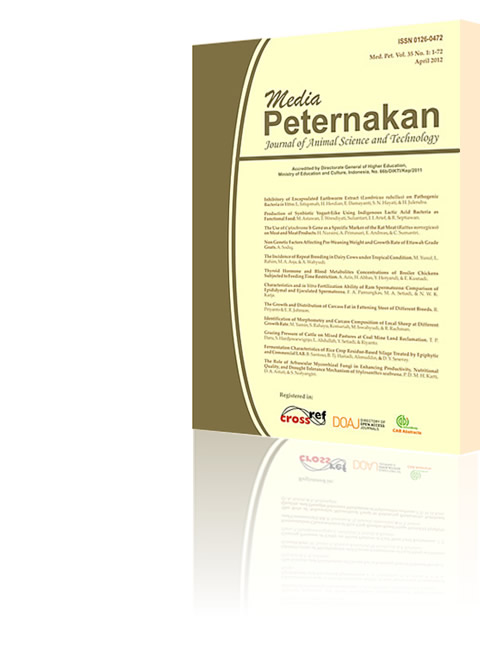Characteristics and in Vitro Fertilization Ability of Ram Spermatozoa: Comparison of Epididymal and Ejaculated Spermatozoa
DOI:
https://doi.org/10.5398/medpet.2012.35.1.38Keywords:
spermatozoa, cauda epididymal, ejaculate, in vitro fertilization, ramAbstract
The characteristics and in vitro fertilization (IVF) ability of ram spermatozoa collected from cauda epididymal was examined. Ejaculated spermatozoa was used as control group in this experiment. Characteristics of spermatozoa including the percentage of progressive motility, viability, abnormality and membrane integrity were evaluated before and after freezing. Fertilization ability of post-thawed spermatozoa in both group was examined based on the pronucleus formation after IVF of in vitro matured (IVM) oocytes. Results from these study showed that there were no significant differences in the characteristics between cauda epididymal and ejaculated spermatozoa before freezing. After freezing, motility of ejaculated spermatozoa was higher than epididymal spermatozoa (54.00±2.24% vs 48.00±4.47%), however the membrane integrity of epididymal spermatozoa was higher than ejaculated spermatozoa (75.38±9.32% vs 65.54±11.88%) (P experiment revealed that the ability of post-thawed epididymal spermatozoa to fertilize oocytes (61.40%, 42.98%, 18.42% for total, normal and polysperm, respectively) did not differ from that of ejaculated spermatozoa (66.67%, 48.78%, 17.89% for total, normal and polysperm, respectively). These results indicate that ram spermatozoa collected from cauda epididymal and then frozen have the ability to fertilize ram ooctyes in vitro in the similar rate with ejaculated spermatozoa.



